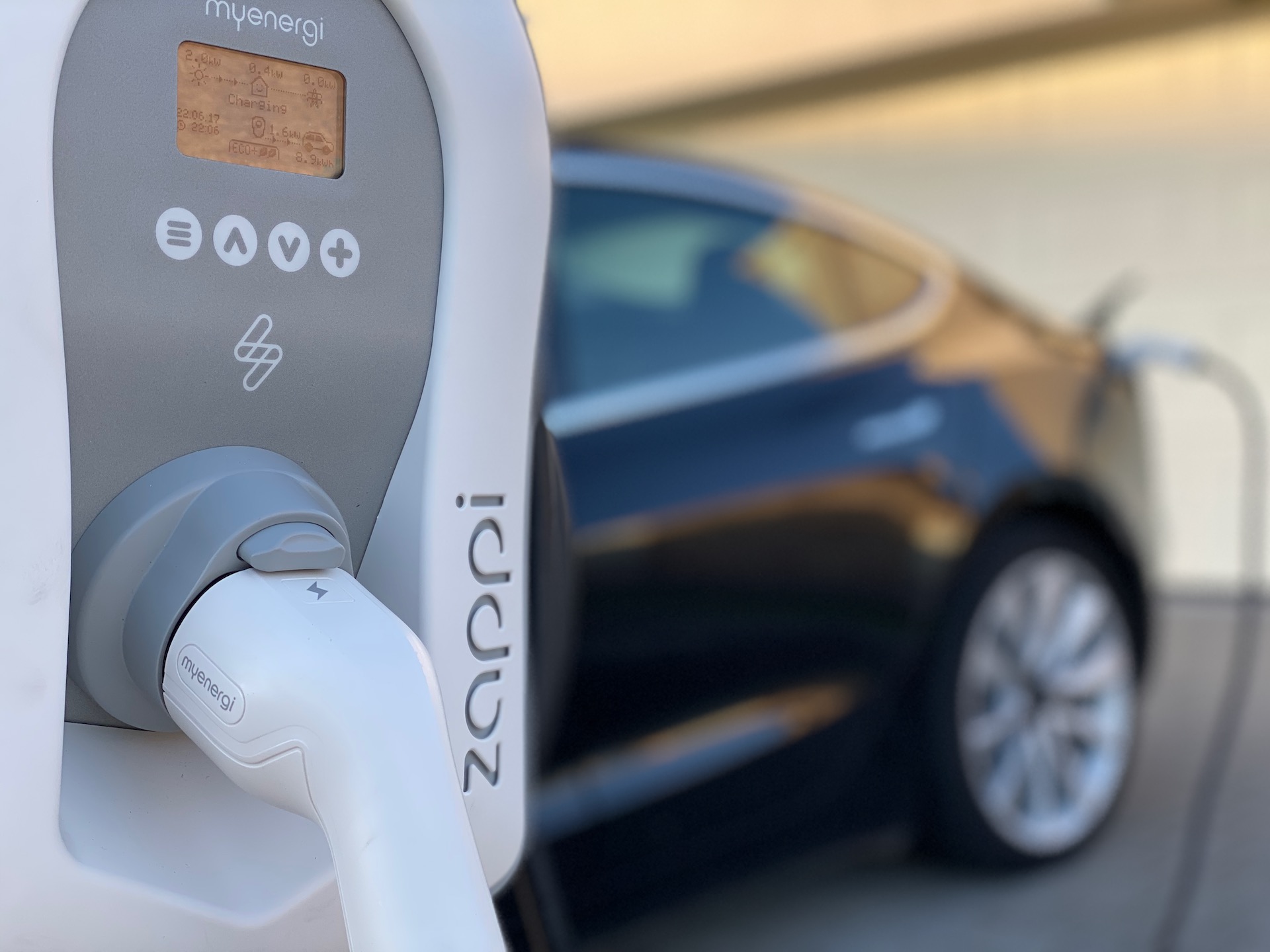With interest in electric vehicles (EV) being at an all-time high, we thought we’d explain the different charging options, and show you how simple it is to charge your EV at home.
Charging your Electric Vehicle at home
Believe it or not, you can actually charge your EV at home by plugging it into a regular home socket. However, it is much easier (and arguably safer) to use a dedicated Electric Vehicle Chargepoint (EVC) with a higher power output.
Fast chargers like these are safer and can significantly cut the time it takes to charge your electric vehicle.
Even better, grants of up to 75% of the cost of a chargepoint and its installation (subject to a maximum of £350 source) are currently available under the government’s Electric Vehicle Homecharge Scheme.
As an OLEV installer, we can help you access this funding and install one of our Zappi, ROLEC and Solar Edge recommended products.
All our recommended chargepoints are suitable for indoor and outdoor installations meaning they can be placed on the side of the house, on a post on the driveway or, in the garage out of sight. The ideal point for an EV Chargepoint means access to a private driveway or a private garage.
Our recommended Home Electrical Vehicle Chargers can be found here
Mixing Electric Vehicle Chargers with Solar Energy and Electricity Storage Solutions
If you are considering an EVC we would also encourage you to look at other electricity generation and storage options. Three of our recommended EVC brands all provide the option to use surplus power created from solar panels and solar power can provide energy to fully charge an electric vehicle.
As you are probably aware renewable power is generated at times of the day when you might not be needing it, and any surplus is simply fed back into the grid. Of course there may be times when you need the power but not much might be being generated, therefore our recommendation would be to have a storage solution that will capture and store the solar photovoltaic energy you generate so it is available when you need it.
We are accredited installers for the Tesla Powerwall 2 Battery which can be used to store the solar photovoltaic energy generated.
About out EV Chargers
- Solar Edge provide an App which allows you to control your consumption of Solar Photovoltaic and grid energy, as well as track the amount used to charge your electric vehicle. You can even schedule the device’s use of grid energy to restrict it to off-peak hours.
- The ROLEC WallPod: EV SolarCharge and Zappi Eco+ are both designed for integration with solar panels and provide a choice of charging by solar only or, solar and grid combined.
Example of charging costs on a Volkswagen e-Golf Electric Vehicle (Source)
- Battery Capacity 35.8 kWh
- Official range 144miles
- Cost to charge at home on a standard rate (14p per kWh) £5.01
- Cost to charge with a Zappi eco+, ROLEC WallPod: EV SolarCharge and Solar Edge (0p per kWh) £0.00
- Cost to charge on a public Fast Charger (30p per kWh) £10.47
Public charging when out and about
There are currently more than 33,000 public charging points in the UK, with 2,571 being in the South West and this number is continually growing (source).
As of 2019 it was a legal requirement for all large petrol stations and motorway service stations to provide charging points. These tend to be Rapid Chargers which cost around £6 for a 45-minute recharge.
- TOP TIP – You will need to sign up with Charge Point providers before using them. Most allow you to join for free, but some might charge an initial fee. It is recommended to choose a provider that shows its tariffs in kWh rather than cost per minute, as you can easily work out the cost if you have the kWh.
Gregor only works with leading manufacturers Zappi, ROLEC, Solar Edge and Tesla.
If you have any questions our Renewable Electrical Team can help guide you through all aspects of supply and installation. Please get in touch.
Photo credit: Zappi charging a Tesla model 3


